Contents
The timing of when to collect chokeberry depends on the purpose of harvesting and the region. For liqueurs or decoration of preservation, chokeberry can be harvested a little unripe. For further preparation of jelly, jams or drying, you need to wait until the fruits are fully ripe.
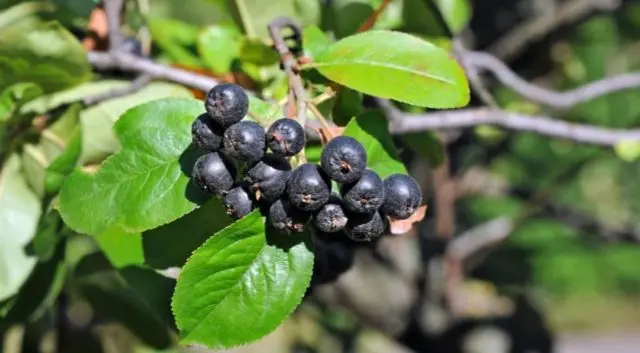
When the chokeberry ripens
The wild ancestor of chokeberry cultivars is inedible. It is a tart astringent berry. Cultivars partly retained the properties of the wild species.
Wild chokeberry is a winter-hardy plant. I. V. Michurin drew attention to this quality, who recommended a fruit shrub for northern fruit growing. Chokeberry cultivars are now bred in all, even rather cold regions. But due to the climate, the ripening time of chokeberry varies, although the fruits of this plant have time to ripen even where winter comes early.
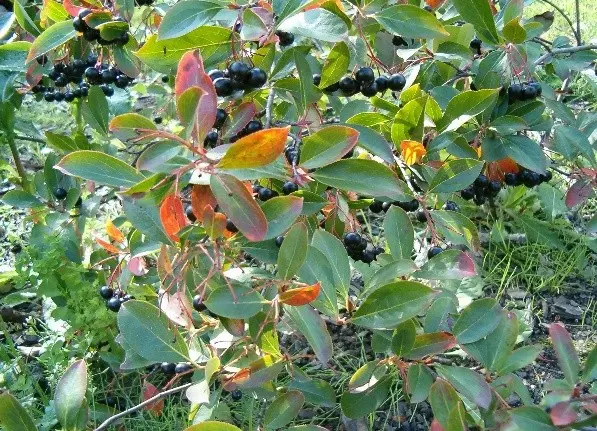
When to harvest chokeberry
Due to winter hardiness and a common appearance similar to mountain ash, there is an erroneous opinion that chokeberry becomes sweet only after it has been frozen. In fact, this is not so. It’s just that in many regions where this crop grows, frosts come at the same time that the crop finally ripens. But in the southern regions, chokeberry ripens well without frost.
The chokeberry ripens from August. At this time, the fruits are already turning black and are relatively easy to separate from the stalks. But the taste of the fruits of a cultivated plant does not differ from wild ones.
From September, the amount of astringents begins to decrease, and the chokeberry acquires a sweet taste. At this time, chokeberry can be harvested for making liqueurs, long-term fresh storage and adding to compotes. For the latter, only a few berries are used, which will give color and original flavor to the main ingredients of preservation: apples and pears.
For food, jams, juices, jams and making wine, you need to collect chokeberry berries from mid-October, when the chokeberry is fully ripe. Such chokeberry is not stored, but it can be dried or frozen. Frozen fruit tends to be more acidic after defrosting, so older blackberries are not suitable for the freezer.
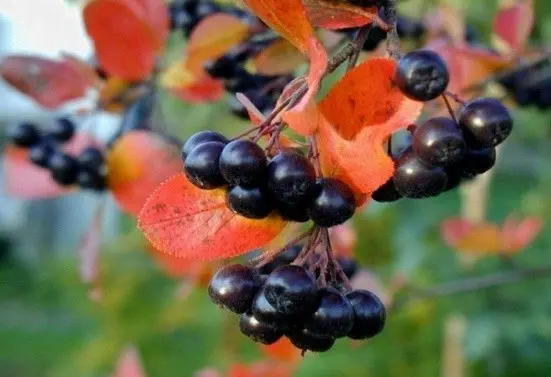
When to collect chokeberry in the Moscow region
The Moscow region is one of the most favorable regions for growing chokeberry. All recommendations for harvesting are based on this region and the rest of the Central Strip of Our Country. Therefore, it is necessary to collect chokeberry in the Moscow region without deviating from the recommended time frame.
Since the chokeberry is used for different purposes, it must be collected at the most appropriate stage of maturity.
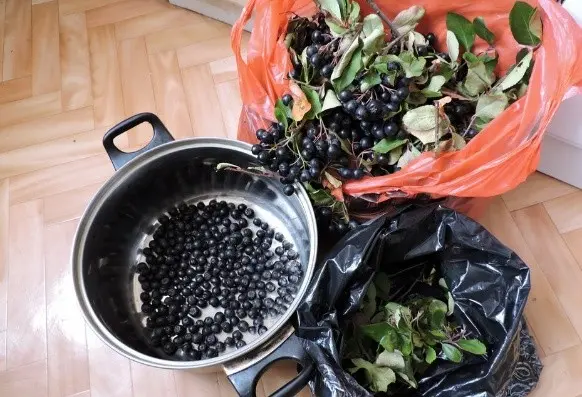
When to collect chokeberry in the Middle lane
In Central Our Country, chokeberry ripens, as in the Moscow region. From a climatic point of view, this is one and the same region. The only difference is that on the southern border of the Middle Strip, the chokeberry can be harvested before the onset of frost, and on the northern frosts it can come a little earlier and the crop will have to be harvested from under the snow. Such freezing will have a bad effect on the further storage of chokeberry.
Therefore, if the plans are to store berries in a “natural” form, it is better to harvest before frost. If the plans include making jam or rubbing with sugar, then you can take your time with the collection.

Dates of harvesting chokeberry in other regions
Before October, chokeberry ripens only in the southern regions, where the vegetative period begins earlier. In the north, in the Urals, Siberia or the Leningrad region, the growing season begins relatively later. Weather permitting, chokeberry will ripen by mid to late October. If the cold comes earlier, you will have to collect frozen unripe chokeberry. More precisely, the fruits of technical ripeness.
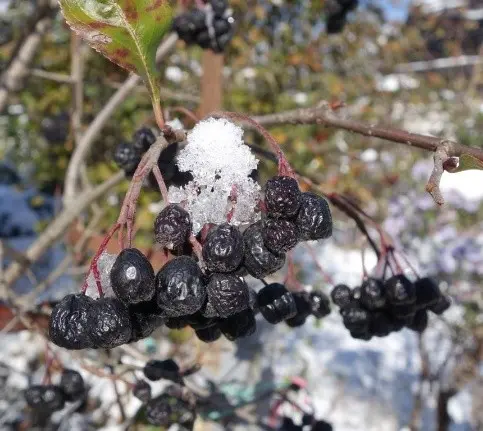
Rules for collecting chokeberry
When harvesting, you need to take into account not only your interests, but also the needs of the plant. Many people prefer to pick only berries so as not to drag garbage home. In addition, the stalks and small branches take up a lot of space. But the bush recovers better if the whole clusters are cut off together with the stalks and small branches on which the clusters grew.
It is possible to collect chokeberry of technical ripeness from mid-August. At this time, chokeberry acquires color, but still has a tart, astringent taste. Aronia harvested at this time can be stored fresh for a long time. Usually the fruits of technical ripeness are harvested for sale. It can be used for high-strength liqueurs, in which alcohol “turns off” taste buds and only color is important to the manufacturer. But it is better to wait with the collection until September.
In September, the fruits of chokeberry acquire not only color, but also a sweet and sour taste. At this time, the chokeberry is still firm to the touch. This is the maximum level of ripeness that can be purchased on the market. Various tricks “boil a little before harvesting” refer specifically to this level of ripeness of the chokeberry. Fruits of “medium” ripeness can also be kept fresh for a long time and are suitable for liqueurs with a small percentage of alcohol. The same level is suitable for adding a small amount of berries to fruit preserves.
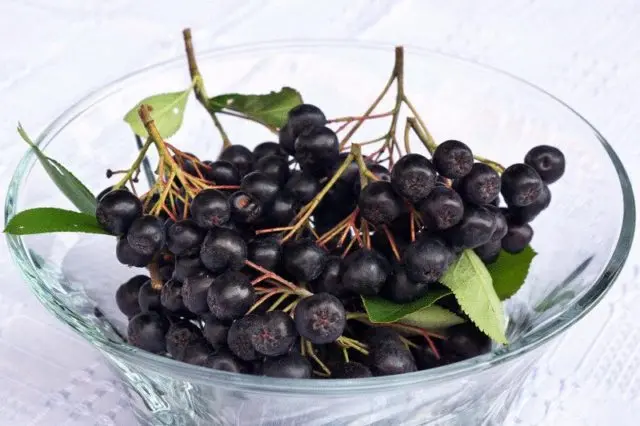
“Mono-processing” is possible after the chokeberry reaches full ripeness. This happens in mid-October. Aronia completely picks up sugar and becomes soft. In order not to damage the berries, they must be cut along with the stalks. Remove excess parts immediately before processing.
Ripe chokeberry can be used to make:
- preserves;
- jam;
- juice;
- wine;
- dried fruits;
- compotes.
Ripe fruits can be used to make compotes without adding other fruits. Ripe aronia is also frozen.
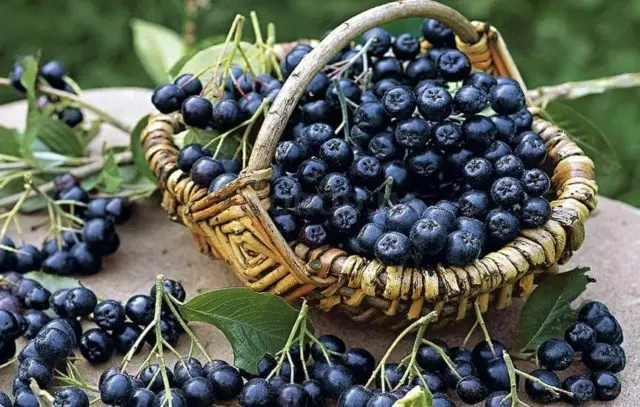
Harvest processing
Black chokeberry of technical ripeness is not particularly processed. It can be dried, frozen, alcoholic. But it also keeps fresh for quite a long time.
Fully ripe fruit must be processed as soon as possible. The soft chokeberry, being damaged, lets out juice, which begins to sour. The ripened crop is processed within 1-2 days. The latter is possible under the condition of storage in the refrigerator. If there is no desire to mess with jam or juices, chokeberry can be frozen at a temperature of -18 ° C.
It should be borne in mind that after defrosting, the fruits must be consumed immediately, since the laws of physics also apply to chokeberry. Frozen water damages fruit cells. When defrosted, the chokeberry “deflates” and releases juice.
A good storage method that does not require electricity is drying. Dried fruits can be stored at room temperature. Otherwise, the processing methods for blackberries are the same as for other fruits.
After the cold weather, the fruits are damaged by frost and can only be used for jam or juice.
Conclusion
You need to collect chokeberry for homemade preparations as late as possible. When collecting for sale, it is better to limit yourself to technical ripeness.









